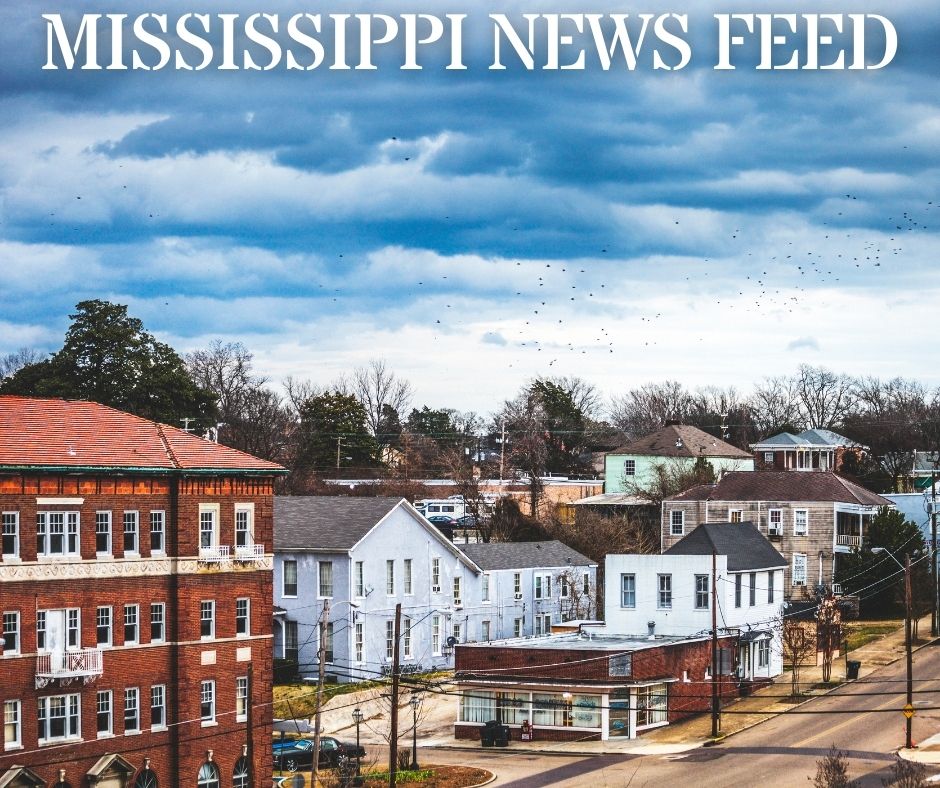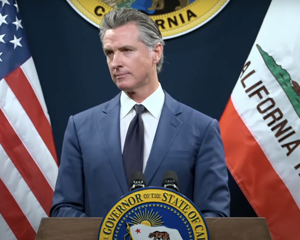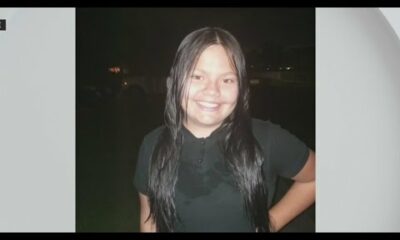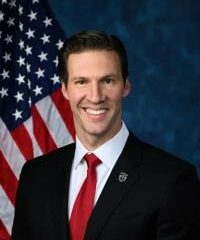Kaiser Health News
Epidemic: Speedboat Epidemiology
by
Tue, 29 Aug 2023 09:00:00 +0000
Shahidul Haq Khan, a Bangladeshi health worker, and Tim Miner, an American with the World Health Organization, worked together on a smallpox eradication team in Bangladesh in the early 1970s. The team was based on a hospital ship and traveled by speedboat to track down cases of smallpox from Barishal to Faridpur to Patuakhali. Every person who agreed to get the smallpox vaccination was a potential outbreak averted, so the team was determined to vaccinate as many people as possible.
The duo leaned on each other, sometimes literally, as they traversed the country’s rugged and watery geography. Khan, whom Miner sometimes referred to as “little brother,” used his local knowledge to help the team navigate both the cultural and physical landscape. When crossing rickety bamboo bridges, he would hold Miner’s hand and help him across. “We didn’t let him fall,” chuckled Khan.
Episode 4 of “Eradicating Smallpox” explores what it took to bring care directly to people where they were.
To conclude the episode, host Céline Gounder speaks with public health advocate Joe Osmundson about his work to help coordinate a culturally appropriate response to mpox in New York City during the summer of 2022. “The model that we’re trying to build is a mobile unit that delivers all sorts of sexual and primary health care opportunities. They’re opportunities!” exclaimed Osmundson.
The Host:
Céline Gounder
Senior fellow & editor-at-large for public health, KFF Health News
Céline is senior fellow and editor-at-large for public health with KFF Health News. She is an infectious diseases physician and epidemiologist. She was an assistant commissioner of health in New York City. Between 1998 and 2012, she studied tuberculosis and HIV in South Africa, Lesotho, Malawi, Ethiopia, and Brazil. Gounder also served on the Biden-Harris Transition COVID-19 Advisory Board.
In Conversation with Céline Gounder:
Joe Osmundson
Public health advocate and clinical assistant professor of biology at New York University
Voices from the Episode:
Tim Miner
Former World Health Organization smallpox eradication program worker in Bangladesh
Shahidul Haq Khan
Former World Health Organization smallpox eradication program worker in Bangladesh
Click to open the transcript
Transcript: Speedboat Epidemiology
Podcast Transcript
Epidemic: “Eradicating Smallpox”
Season 2, Episode 4: Speedboat Epidemiology
Air date: Aug. 29, 2023
Editor’s note: If you are able, we encourage you to listen to the audio of “Epidemic,” which includes emotion and emphasis not found in the transcript. This transcript, generated using transcription software, has been edited for style and clarity. Please use the transcript as a tool but check the corresponding audio before quoting the podcast.
TRANSCRIPT
Céline Gounder: In the early 1970s, smallpox was still stalking parts of South Asia. India had launched its eradication program more than a decade before, but public health workers couldn’t keep up with the virus.
Enter … the bifurcated needle.
[Metallic ding sound]
[Light instrumental music begins playing]
Tim Miner: It was a marvelous invention in its simplicity. It looks like a little cocktail fork.
Céline Gounder: You dip the prongs into a bit of vaccine …
Tim Miner: And you would just prick the skin about 12 or 15 times until there was a little trace of blood and then you’d take another one.
Céline Gounder: It barely took 30 seconds to vaccinate someone.
And it didn’t hurt.
Yogesh Parashar: No.
Céline Gounder: Well … it didn’t hurt too much.
Yogesh Parashar: It was just like a pinprick, rapidly done on your forearm. You had a huge supply with you and you just went about and — dot, dot, dot — vaccinated people, carry hundreds with you at one go.
Tim Miner: And you could train somebody in a matter of minutes to do it.
Céline Gounder: Easy to use. Easy to clean. And a big improvement over the twisting teeth of the vaccine instrument health workers had to use before.
The bifurcated needle was maybe 2 and a half, 3 inches long.
Small, but sturdy enough for rough-and-tumble fieldwork.
Yogesh Parashar: It was made of steel. And it used to come in something that looked like a brick. It was just like one of those gold bricks that you see in the movies.
Céline Gounder: And maybe worth its weight in gold.
[Light instrumental music fades to silence]
Céline Gounder: That “cocktail fork” was among the pioneering innovations that helped public health workers wipe out a centuries-old virus.
Tim Miner: You had the bifurcated needle, you had the sterile water, and you had the freeze-dried vaccine, and you could mix them up and off you’d go.
Céline Gounder: Ah, but getting there wasn’t always that easy.
I’m Dr. Céline Gounder, and this is “Epidemic.”
[Epidemic theme music plays]
Céline Gounder: On this episode, we’re exploring what it took to deliver the smallpox vaccine to the people — and all the remaining places — that needed it most.
In South Asia, Bangladesh was a major battleground in the campaign to stop smallpox.
We spoke with a man who helped lead an eradication team there.
Shahidul Haq Khan: My name is MD Shahidul Haq Khan.
Céline Gounder: For our interview, Shahidul Haq Khan invited me to his home in Barishal. That’s in south-central Bangladesh. We sat at a table in the courtyard, and his granddaughter, Kashfia, who looked like she was around 10 years old, stood close by …
Céline Gounder: Kashfia. So nice to meet you, Kashfia. I’m Céline.
Kashfia: Hello.
Céline Gounder: Hello. [Céline chuckles.] Are you going to listen to us?
Céline Gounder: Kashfia wanted to hear her granddad’s stories, and I got the impression that was also important to Shahidul.
As the two of us did our best to communicate through a translator — with neighbors, chickens, and street noise all around — Shahidul wanted me to understand why he was speaking with me and the significance of the smallpox campaign.
Shahidul Haq Khan: [Shahidul speaking in Bengali]
English translation: The purpose of saying these things is that we needed all this effort. We put a lot of hard work and effort behind smallpox eradication.
Céline Gounder: Very hard work. You must be very proud of what you helped accomplish.
Shahidul Haq Khan: [Shahidul speaking in Bengali]
English translation: Yes, of course. Of course, I can say that we’re proud to say that we’ve eliminated smallpox from this country.
Céline Gounder: The job was to hunt down smallpox — and stop it — in a country packed with people, crisscrossed by rivers, edged with mangrove forests, and dotted with remote lowland river islands.
[Rain sounds fade in]
Céline Gounder: And there were the monsoons. It rained A LOT.
[Bouncy, upbeat music begins playing softly in the background]
[Rain sounds fades out]
Tim Miner: Uh, well, we got wet. [Tim chuckles.] To state the obvious.
Céline Gounder: That’s Tim Miner. He was an officer with the World Health Organization in Bangladesh.
Tim Miner: My legal name is Howard Miner, but I was the third Howard, so I got nicknamed Tim.
Céline Gounder: Shahidul and Tim worked together for several months in 1974.
The public health strategy was called “search and containment,” and a big part of that meant figuring out how to get the vaccine from one community to the next.
Tim Miner: And occasionally you have to park your motorcycle, take your shoes and socks off, and walk across a leech-infested paddy field to get to the next case.
Céline Gounder: The work depended on local knowledge, and Shahidul was the local knowledge.
He was the lead Bangladeshi member on the eradication team, and when they arrived at a village that had a suspected case of smallpox, often Shahidul went in first, with Tim a few steps behind …
Tim Miner: Someone would bring out some chairs. And sometimes we would have tea and biscuits. Or, if they didn’t have tea and biscuits, then somebody would climb up and get a coconut and chop off the top and watch me drink it and dribble the coconut milk all over myself, and everybody had a good time.
Shahidul Haq Khan: [Shahidul speaking in Bengali]
English translation: Dr. Miner called me “little brother.” I was younger then. How old was I? 21 or 22 years old.
Tim Miner: He referred to me as “Dr. Miner,” even though I’m not a … a physician. That’s how he referred to me.
Céline Gounder: Shahidul had been working in public health before he joined the smallpox effort. He offered guidance on culture — and occasionally gave Tim a hand on rickety bamboo bridges.
Shahidul Haq Khan: [Shahidul speaking in Bengali]
English translation: Most of the time, I escorted him across the bamboo bridge. I took his bag and held his hand and helped him across.
Tim Miner: You learn to walk and not look down and just, uh, you know, hang onto the poles. And, fortunately, I never fell in.
Shahidul Haq Khan: [Shahidul speaking in Bengali]
English translation: We didn’t let him fall.
[Bouncy, upbeat music fades out]
Céline Gounder: The team was based on a hospital ship, called the Niramoy. It had all the basics: a couple of cabins, a space to perform surgery, plus a few comforts, like a generator they’d turn on in the morning for showers, a cook who picked up fresh fish at the market every day.
Tim Miner: I would have a doodh cha, a tea with milk, and a kacha morich pyaz — scrambled eggs with, uh, chiles.
Céline Gounder: The hospital ship hauled supplies from port to port. And everywhere they went, they towed a speedboat along with them.
Tim Miner: We would receive reports of cases and we would get down from the ship in our speedboat, and the speedboat driver would take us as far as the boat could go. And we would walk, do the investigation, and find out who the contacts were and vaccinate the village and surrounding areas.
Céline Gounder: Tim calls it “speedboat epidemiology.” The work required a willingness to go wherever and everywhere the virus took up residence. By and large, people welcomed them and were glad to get the vaccine.
Tim Miner: They know about smallpox. They’ve been dealing with it, you know, all of their lives. And they have lost family members to the disease.
Céline Gounder: Still, the task was huge: to find and vaccinate every person with smallpox — and all the people that person had come in contact with.
[Subtle music begins playing]
Céline Gounder: In modern-day public health, the work gets done with cellphones and spreadsheets, maybe social media. In Bangladesh in 1974, they had none of that.
Shahidul and Tim had the speedboat, motorbikes, and their feet to cover a territory that took them all the way down to the coast.
Tim Miner: First there’s Barishal …
Shahidul Haq Khan: Latachapli …
Tim Miner: … then there’s Faridpur …
Shahidul Haq Khan: … Dankupara …
Tim Miner: … then there’s Patuakhali.
Shahidul Haq Khan: … and Kuakata.
Céline Gounder: People were constantly on the move — maybe for seasonal work or better opportunities. That made contact tracing tricky. During one investigation, Tim identified a man who’d been exposed to the virus, but he’d left the region for Dhaka.
The capital was densely populated — a city of 2 million in 1974. And smallpox was highly contagious. So Tim called a colleague — on the shortwave radio — to see if he could track down the man in Dhaka.
[Ambient Dhaka street noises play in the background]
Tim Miner: Well, it’s not just a street address or a ZIP code or anything like that, as you can well imagine. He lived in a basti, or a slum. And I described it as best I could. You know, ‘You enter by the big tree and turn left at the tea stall and walk the path and then start calling out for the family name.’
Céline Gounder: They found the guy! And vaccinated him. Tim says the man had smallpox, but the virus hadn’t quite erupted yet, so it was a pretty mild case.
Tim Miner: Because of his immunization. It is somewhat miraculous, the needle in the haystack.
[Music fades out]
Céline Gounder: In Bangladesh, people weren’t likely to just show up to a local clinic to get the vaccine, so the team took the vaccine to the people.
At its best, public health follows and bends to the rhythm of the culture. For example, after Ramadan, as Muslims began to break the fast for Eid …
Tim Miner: Where people go back to their villages and visit and bring presents and gifts and food.
[Ambient sounds of the water from a port in Bangladesh play]
Céline Gounder: The team went to ports where steamer ships departed, asking in Bengali if travelers had come in contact with anyone with the disease’s distinctive pustules.
Tim Miner: Guṭibasanta, uh, basanta rōgī.
Céline Gounder: Which means “smallpox patient.”
Tim Miner: Have you seen any guṭibasanta and basanta rōgī?
Céline Gounder: Tim says he relied on his team to figure out how best to make the person in front of them comfortable.
Tim Miner: ‘What would you do? What do you think should be done in this case?’ And I don’t think this is done often enough. It was a real partnership. It was real working together.
Céline Gounder: Well, a partnership, yes. But Shahidul Haq Khan says the search-and-containment program was pretty strict. His work was meticulously checked and checked again.
Remember, he was maybe 21 or 22 years old, with a big responsibility on his shoulders, and Tim Miner was a tough boss.
Shahidul Haq Khan: [Shahidul speaking in Bengali]
English translation: At any cost, we had to vaccinate all. There was no other way.
Céline Gounder: Sometimes Shahidul had to return to the same home over and over — or hang out, if the man of the house was still in the fields working.
Shahidul Haq Khan: [Shahidul speaking in Bengali]
English translation: We had to wait until they returned.
Shahidul Haq Khan: [Shahidul speaking in Bengali]
English translation: Otherwise, Dr. Miner would again take us back there, no matter how late. [Shahidul laughs]
Céline Gounder: One evening, Shahidul returned to the hospital ship after a day of door-to-door canvassing, and had to give a not-so-great report to Tim.
[Tense music begins playing]
Shahidul Haq Khan: [Shahidul speaking in Bengali] … a pregnant, uh, …
English translation: I couldn’t vaccinate a pregnant woman in Dankupara. This was the first time that I couldn’t vaccinate someone.
Shahidul Haq Khan: [Shahidul speaking in Bengali]
English translation: I couldn’t convince her at all. He immediately told us to pack up. He stopped the work and said, “Let’s go.”
Shahidul Haq Khan: [Shahidul speaking in Bengali]
English translation: Immediately. At that very moment.
Tim Miner: We were working basically 24/7, if need be.
Céline Gounder: The team headed to the speedboat. It was late. And it was freezing. Shahidul remembers the bite of the cold air as they blasted across the water toward the woman’s village.
Tim Miner: I fully understand, understood why this woman hesitated to be vaccinated. She was expecting a child and she didn’t want to do anything to jeopardize her life or the life of the unborn child. So, we were very gentle in talking with her and answering her questions. It was time well spent.
Céline Gounder: The woman agreed to take the vaccine.
Shahidul Haq Khan: [Shahidul speaking in Bengali]
English translation: That day was one of the most memorable of my life.
[Music fades to silence]
Céline Gounder: Many on the team considered their outreach to women fundamental to success in South Asia, because … women talk.
What they say, what they believe, echoes.
Tim Miner: They get together, they do the laundry, they do the cooking, they share good times and bad times. This woman who was vaccinated probably showed her vaccination either in her family or in the village. And that’s the importance of getting one person, especially a pregnant woman who will tell others about immunization.
Céline Gounder: Public health workers trying to end smallpox across South Asia mostly had the same tools — the vaccine, that bifurcated needle, and a strategy — on paper. But squashing the virus required tactics specific to each community: its needs, its culture, its worries … and its terrain.
[Staccato music begins playing]
Céline Gounder: Smallpox eradication workers went to great lengths to meet people where they were.
But Joe Osmundson, who’s a public health advocate in New York City, told me that’s not an approach we see nearly enough in public health today.
Joe Osmundson: Céline, it’s not your first time at the rodeo. [Celine laughs] Um, it’s like, we’ve all been through this again and again and again.
We know what the problems are and yet we seem reluctant to actually do the right thing, which is to build processes that meet people where they’re at.
Céline Gounder: After the break, more on what it looks like to bring public health directly to those who need it most.
[Music fades to silence]
Céline Gounder: Mpox, formerly known as monkeypox, is a highly contagious virus. Last summer, mpox cases spiked around the world, spreading quickly, predominantly among men who have sex with men. Mpox spreads through physical contact. It causes a painful blistering rash and, in extreme cases, it can be deadly.
My colleague Joe Osmundson acted as a community liaison for the New York City Department of Health to help coordinate a culturally appropriate response to mpox.
Joe Osmundson: I’m a microbiologist by training, but I also just do tons of advocacy and activism as a queer person who believes in equal access to the best biomedicine available.
Céline Gounder: As mpox cases were increasing, we knew we needed to vaccinate those at highest risk as quickly as possible. Joe’s plan? Mobile vans to quickly bring mpox vaccines to places where high-risk people already were.
Joe Osmundson: Our idea was to go to commercial sex venues, because commercial sex venues self-select for people with a large number of sexual partners. And if you give them the best possible immunity, that protects not just the people at the party but all the other people in the larger sexual network that they connect with.
Céline Gounder: What is a commercial sex venue?
Joe Osmundson: It’s basically a nonhousehold space where people gather for sex.
When you have public venues where people gather, you have the opportunity to meet them where they’re at, to provide education, to provide condoms, to provide access to HIV testing and access to health care.
So many queer people don’t have affirming doctors, don’t feel comfortable asking about sexual health with their physicians. So, you can put a van outside with affirming physicians and actually provide that preventative care that actually stops the infection.
Céline Gounder: Did you run into any obstacles in doing this outreach? Setting up the mobile vans …?
Joe Osmundson: So, there is a huge amount of mistrust in this community for city officials, for good reason. For many decades there was a group inside the New York City Department of Health that had undercover people who would go to these parties and find violations and close them down. So really it was only me and a couple other people doing outreach on-site.
Céline Gounder: How did it work, what was the scene like, and what was your role in that?
Joe Osmundson: Yeah, so, when I was there, I would go inside the club and, you know, there’s a little line, an area where people get dressed or undressed, and I would just hang out there and people would have a lot of questions.
So, because, again, they perceived me as being, like, a part of their community, it was very easy to talk to people and just ask, you know, “Hey, have you had your vaccine yet? Have you had both doses?” If not, you know, it’ll take 15 minutes. I can walk you down to the van and get you that dose tonight.
Céline Gounder: Were these mobile vaccination vans successful?
Joe Osmundson: We find them to be massively successful. Once the city was able to get the vans there, people were so grateful to be able to get a shot on-site.
We were giving 60, 80 doses per event — when the event might only have 140 people — so we were vaccinating 60% of these parties.
That’s the other magic of the mobile units, was that you had people queer people talking to queer people, and even queer people of color talking to queer people of color and offering the care in terms that that community knows how to respond to and also just has more inherent trust with.
Céline Gounder: But, at the same time, in New York City, mpox vaccination rates have been disproportionately low in Black communities.
Joe Osmundson: Mm-hmm.
Céline Gounder: As well as Hispanic communities.
What could public health leaders have done from the start to ensure more equitable vaccine distribution, and what should they be doing now?
Joe Osmundson: Yeah. It was a remarkable sort of mistake that, not just New York, but many cities made where they said we’ll build the foundation and then worry about equity later, because this is an emergency.
So we’ll open up a brick-and-mortar in Chelsea, and then we’ll get the vaccine vans up at, you know, Brooklyn Pride, a Bronx health clinic. You know, we’ll do that later.
We know that if you don’t do equity as the foundation, you will be chasing disparities.
Céline Gounder: What can we say about who’s been vaccinated and who remains unvaccinated?
Joe Osmundson: Black people are undervaccinated. They also have a higher rate of advanced HIV infection, and mpox plus advanced HIV means really severe disease and even death. Ninety percent of mpox deaths have been in Black people, Black queer people with advanced HIV.
And we need something brand-new because we’ve been failing these folks for years. They have so many horrific experiences with their health care providers, or they don’t have insurance, or they’re underemployed, or they live super far from the nearest health care clinic.
When people have difficulties accessing care, it spreads to every disease state, from HIV to mpox to primary care, etc.
Céline Gounder: How can we apply this model of health outreach beyond mpox?
Joe Osmundson: The model that we’re trying to build is a mobile unit that delivers all sorts of sexual and primary health care opportunities. They are opportunities! You know? If someone’s getting a covid vaccine, give them a flu vaccine at the same time. The literature shows that these interventions work.
Céline Gounder: What else is there beyond vans? Are there other strategies when it comes to reaching people where they are that we haven’t employed that we should be thinking about?
Joe Osmundson: We have affirming clinicians, affirming Black queer clinicians all over this city. Their expertise should be fostered.
For years there’s been this model of health officials talking to community. And that’s outreach. And we aren’t done with that.
We have experts, we have clinicians, we have epidemiologists, we have scientists who are in the community who know the science just as well as health officials. And communication needs to go two ways.
Céline Gounder: That was Joe Osmundson, a microbiologist at New York University and the author of the book “Virology.”
Joe Osmundson: The sexiest public health outreach worker of all time! [Laughter] A face made for radio. [Laughter]
[“Epidemic” theme music begins playing]
Céline Gounder: Next time on “Epidemic” …
Larry Brilliant: Your company is sending death all over the world. You’re the greatest exporter of smallpox in history … You’ve got to stop this.
Céline Gounder: “Eradicating Smallpox,” our latest season of “Epidemic,” is a co-production of KFF Health News and Just Human Productions.
Additional support provided by the Sloan Foundation.
This episode was produced by Taylor Cook, Zach Dyer, and me.
Redwan Ahmed was our translator and local reporting partner in Bangladesh.
Managing editor Taunya English was scriptwriter for the episode — with help from Stephanie O’Neill.
Oona Tempest is our graphics and photo editor.
The show was engineered by Justin Gerrish.
Voice acting by Pinaki Kar.
We had extra editing help from Simone Popperl.
Music in this episode is from the Blue Dot Sessions and Soundstripe.
We’re powered and distributed by Simplecast.
If you enjoyed the show, please tell a friend. And leave us a review on Apple Podcasts. It helps more people find the show.
Follow KFF Health News on Twitter, Instagram, and TikTok.
And find me on Twitter @celinegounder. On our socials, there’s more about the ideas we’re exploring on the podcasts. And subscribe to our newsletters at kffhealthnews.org so you’ll never miss what’s new and important in American health care, health policy, and public health news.
I’m Dr. Céline Gounder. Thanks for listening to “Epidemic.”
[“Epidemic” theme fades out]
Credits
Taunya English
Managing editor
Taunya is senior editor for broadcast innovation with KFF Health News, where she leads enterprise audio projects.
Zach Dyer
Senior producer
Zach is senior producer for audio with KFF Health News, where he supervises all levels of podcast production.
Taylor Cook
Associate producer
Taylor is associate audio producer for Season 2 of Epidemic. She researches, writes, and fact-checks scripts for the podcast.
Oona Tempest
Photo editing, design, logo art
Oona is a digital producer and illustrator with KFF Health News. She researched, sourced, and curated the images for the season.
Additional Newsroom Support
Lydia Zuraw, digital producer Tarena Lofton, audience engagement producer Hannah Norman, visual producer and visual reporter Simone Popperl, broadcast editor Chaseedaw Giles, social media manager Mary Agnes Carey, partnerships editor Damon Darlin, executive editor Terry Byrne, copy chief Gabe Brison-Trezise, deputy copy chiefChris Lee, senior communications officer
Additional Reporting Support
Swagata Yadavar, translator and local reporting partner in IndiaRedwan Ahmed, translator and local reporting partner in Bangladesh
Epidemic is a co-production of KFF Health News and Just Human Productions.
To hear other KFF Health News podcasts, click here. Subscribe to Epidemic on Apple Podcasts, Spotify, Google, Pocket Casts, or wherever you listen to podcasts.
Title: Epidemic: Speedboat Epidemiology
Sourced From: kffhealthnews.org/news/podcast/speedboat-epidemiology-season-2-episode-4-speedboat-epidemiology/
Published Date: Tue, 29 Aug 2023 09:00:00 +0000
Did you miss our previous article…
https://www.biloxinewsevents.com/a-nanoengineer-teamed-up-with-rihannas-tattoo-artist-to-make-smarter-ink/
Kaiser Health News
US Judge Names Receiver To Take Over California Prisons’ Mental Health Program
SACRAMENTO, Calif. — A judge has initiated a federal court takeover of California’s troubled prison mental health system by naming the former head of the Federal Bureau of Prisons to serve as receiver, giving her four months to craft a plan to provide adequate care for tens of thousands of prisoners with serious mental illness.
Senior U.S. District Judge Kimberly Mueller issued her order March 19, identifying Colette Peters as the nominated receiver. Peters, who was Oregon’s first female corrections director and known as a reformer, ran the scandal-plagued federal prison system for 30 months until President Donald Trump took office in January. During her tenure, she closed a women’s prison in Dublin, east of Oakland, that had become known as the “rape club.”
Michael Bien, who represents prisoners with mental illness in the long-running prison lawsuit, said Peters is a good choice. Bien said Peters’ time in Oregon and Washington, D.C., showed that she “kind of buys into the fact that there are things we can do better in the American system.”
“We took strong objection to many things that happened under her tenure at the BOP, but I do think that this is a different job and she’s capable of doing it,” said Bien, whose firm also represents women who were housed at the shuttered federal women’s prison.
California corrections officials called Peters “highly qualified” in a statement, while Gov. Gavin Newsom’s office did not immediately comment. Mueller gave the parties until March 28 to show cause why Peters should not be appointed.
Peters is not talking to the media at this time, Bien said. The judge said Peters is to be paid $400,000 a year, prorated for the four-month period.
About 34,000 people incarcerated in California prisons have been diagnosed with serious mental illnesses, representing more than a third of California’s prison population, who face harm because of the state’s noncompliance, Mueller said.
Appointing a receiver is a rare step taken when federal judges feel they have exhausted other options. A receiver took control of Alabama’s correctional system in 1976, and they have otherwise been used to govern prisons and jails only about a dozen times, mostly to combat poor conditions caused by overcrowding. Attorneys representing inmates in Arizona have asked a judge to take over prison health care there.
Mueller’s appointment of a receiver comes nearly 20 years after a different federal judge seized control of California’s prison medical system and installed a receiver, currently J. Clark Kelso, with broad powers to hire, fire, and spend the state’s money.
California officials initially said in August that they would not oppose a receivership for the mental health program provided that the receiver was also Kelso, saying then that federal control “has successfully transformed medical care” in California prisons. But Kelso withdrew from consideration in September, as did two subsequent candidates. Kelso said he could not act “zealously and with fidelity as receiver in both cases.”
Both cases have been running for so long that they are now overseen by a second generation of judges. The original federal judges, in a legal battle that reached the U.S. Supreme Court, more than a decade ago forced California to significantly reduce prison crowding in a bid to improve medical and mental health care for incarcerated people.
State officials in court filings defended their improvements over the decades. Prisoners’ attorneys countered that treatment remains poor, as evidenced in part by the system’s record-high suicide rate, topping 31 suicides per 100,000 prisoners, nearly double that in federal prisons.
“More than a quarter of the 30 class-members who died by suicide in 2023 received inadequate care because of understaffing,” prisoners’ attorneys wrote in January, citing the prison system’s own analysis. One prisoner did not receive mental health appointments for seven months “before he hanged himself with a bedsheet.”
They argued that the November passage of a ballot measure increasing criminal penalties for some drug and theft crimes is likely to increase the prison population and worsen staffing shortages.
California officials argued in January that Mueller isn’t legally justified in appointing a receiver because “progress has been slow at times but it has not stalled.”
Mueller has countered that she had no choice but to appoint an outside professional to run the prisons’ mental health program, given officials’ intransigence even after she held top officials in contempt of court and levied fines topping $110 million in June. Those extreme actions, she said, only triggered more delays.
The 9th U.S. Circuit Court of Appeals on March 19 upheld Mueller’s contempt ruling but said she didn’t sufficiently justify calculating the fines by doubling the state’s monthly salary savings from understaffing prisons. It upheld the fines to the extent that they reflect the state’s actual salary savings but sent the case back to Mueller to justify any higher penalty.
Mueller had been set to begin additional civil contempt proceedings against state officials for their failure to meet two other court requirements: adequately staffing the prison system’s psychiatric inpatient program and improving suicide prevention measures. Those could bring additional fines topping tens of millions of dollars.
But she said her initial contempt order has not had the intended effect of compelling compliance. Mueller wrote as far back as July that additional contempt rulings would also be likely to be ineffective as state officials continued to appeal and seek delays, leading “to even more unending litigation, litigation, litigation.”
She went on to foreshadow her latest order naming a receiver in a preliminary order: “There is one step the court has taken great pains to avoid. But at this point,” Mueller wrote, “the court concludes the only way to achieve full compliance in this action is for the court to appoint its own receiver.”
This article was produced by KFF Health News, which publishes California Healthline, an editorially independent service of the California Health Care Foundation.
If you or someone you know may be experiencing a mental health crisis, contact the 988 Suicide & Crisis Lifeline by dialing or texting “988.”
The post US Judge Names Receiver To Take Over California Prisons’ Mental Health Program appeared first on kffhealthnews.org
Kaiser Health News
Amid Plummeting Diversity at Medical Schools, a Warning of DEI Crackdown’s ‘Chilling Effect’
The Trump administration’s crackdown on DEI programs could exacerbate an unexpectedly steep drop in diversity among medical school students, even in states like California, where public universities have been navigating bans on affirmative action for decades. Education and health experts warn that, ultimately, this could harm patient care.
Since taking office, President Donald Trump has issued a handful of executive orders aimed at terminating all diversity, equity, and inclusion, or DEI, initiatives in federally funded programs. And in his March 4 address to Congress, he described the Supreme Court’s 2023 decision banning the consideration of race in college and university admissions as “brave and very powerful.”
Last month, the Education Department’s Office for Civil Rights — which lost about 50% of its staff in mid-March — directed schools, including postsecondary institutions, to end race-based programs or risk losing federal funding. The “Dear Colleague” letter cited the Supreme Court’s decision.
Paulette Granberry Russell, president and CEO of the National Association of Diversity Officers in Higher Education, said that “every utterance of ‘diversity’ is now being viewed as a violation or considered unlawful or illegal.” Her organization filed a lawsuit challenging Trump’s anti-DEI executive orders.
While California and eight other states — Arizona, Florida, Idaho, Michigan, Nebraska, New Hampshire, Oklahoma, and Washington — had already implemented bans of varying degrees on race-based admissions policies well before the Supreme Court decision, schools bolstered diversity in their ranks with equity initiatives such as targeted scholarships, trainings, and recruitment programs.
But the court’s decision and the subsequent state-level backlash — 29 states have since introduced bills to curb diversity initiatives, according to data published by the Chronicle of Higher Education — have tamped down these efforts and led to the recent declines in diversity numbers, education experts said.
After the Supreme Court’s ruling, the numbers of Black and Hispanic medical school enrollees fell by double-digit percentages in the 2024-25 school year compared with the previous year, according to the Association of American Medical Colleges. Black enrollees declined 11.6%, while the number of new students of Hispanic origin fell 10.8%. The decline in enrollment of American Indian or Alaska Native students was even more dramatic, at 22.1%. New Native Hawaiian or other Pacific Islander enrollment declined 4.3%.
“We knew this would happen,” said Norma Poll-Hunter, AAMC’s senior director of workforce diversity. “But it was double digits — much larger than what we anticipated.”
The fear among educators is the numbers will decline even more under the new administration.
At the end of February, the Education Department launched an online portal encouraging people to “report illegal discriminatory practices at institutions of learning,” stating that students should have “learning free of divisive ideologies and indoctrination.” The agency later issued a “Frequently Asked Questions” document about its new policies, clarifying that it was acceptable to observe events like Black History Month but warning schools that they “must consider whether any school programming discourages members of all races from attending.”
“It definitely has a chilling effect,” Poll-Hunter said. “There is a lot of fear that could cause institutions to limit their efforts.”
Numerous requests for comment from medical schools about the impact of the anti-DEI actions went unreturned. University presidents are staying mum on the issue to protect their institutions, according to reporting from The New York Times.
Utibe Essien, a physician and UCLA assistant professor, said he has heard from some students who fear they won’t be considered for admission under the new policies. Essien, who co-authored a study on the effect of affirmative action bans on medical schools, also said students are worried medical schools will not be as supportive toward students of color as in the past.
“Both of these fears have the risk of limiting the options of schools folks apply to and potentially those who consider medicine as an option at all,” Essien said, adding that the “lawsuits around equity policies and just the climate of anti-diversity have brought institutions to this place where they feel uncomfortable.”
In early February, the Pacific Legal Foundation filed a lawsuit against the University of California-San Francisco’s Benioff Children’s Hospital Oakland over an internship program designed to introduce “underrepresented minority high school students to health professions.”
Attorney Andrew Quinio filed the suit, which argues that its plaintiff, a white teenager, was not accepted to the program after disclosing in an interview that she identified as white.
“From a legal standpoint, the issue that comes about from all this is: How do you choose diversity without running afoul of the Constitution?” Quinio said. “For those who want diversity as a goal, it cannot be a goal that is achieved with discrimination.”
UC Health spokesperson Heather Harper declined to comment on the suit on behalf of the hospital system.
Another lawsuit filed in February accuses the University of California of favoring Black and Latino students over Asian American and white applicants in its undergraduate admissions. Specifically, the complaint states that UC officials pushed campuses to use a “holistic” approach to admissions and “move away from objective criteria towards more subjective assessments of the overall appeal of individual candidates.”
The scrutiny of that approach to admissions could threaten diversity at the UC-Davis School of Medicine, which for years has employed a “race-neutral, holistic admissions model” that reportedly tripled enrollment of Black, Latino, and Native American students.
“How do you define diversity? Does it now include the way we consider how someone’s lived experience may be influenced by how they grew up? The type of school, the income of their family? All of those are diversity,” said Granberry Russell, of the National Association of Diversity Officers in Higher Education. “What might they view as an unlawful proxy for diversity equity and inclusion? That’s what we’re confronted with.”
California Attorney General Rob Bonta, a Democrat, recently joined other state attorneys general to issue guidance urging that schools continue their DEI programs despite the federal messaging, saying that legal precedent allows for the activities. California is also among several states suing the administration over its deep cuts to the Education Department.
If the recent decline in diversity among newly enrolled students holds or gets worse, it could have long-term consequences for patient care, academic experts said, pointing toward the vast racial disparities in health outcomes in the U.S., particularly for Black people.
A higher proportion of Black primary care doctors is associated with longer life expectancy and lower mortality rates among Black people, according to a 2023 study published by the JAMA Network.
Physicians of color are also more likely to build their careers in medically underserved communities, studies have shown, which is increasingly important as the AAMC projects a shortage of up to 40,400 primary care doctors by 2036.
“The physician shortage persists, and it’s dire in rural communities,” Poll-Hunter said. “We know that diversity efforts are really about improving access for everyone. More diversity leads to greater access to care — everyone is benefiting from it.”
This article was produced by KFF Health News, which publishes California Healthline, an editorially independent service of the California Health Care Foundation.
The post Amid Plummeting Diversity at Medical Schools, a Warning of DEI Crackdown’s ‘Chilling Effect’ appeared first on kffhealthnews.org
Kaiser Health News
Tribal Health Leaders Say Medicaid Cuts Would Decimate Health Programs
As Congress mulls potentially massive cuts to federal Medicaid funding, health centers that serve Native American communities, such as the Oneida Community Health Center near Green Bay, Wisconsin, are bracing for catastrophe.
That’s because more than 40% of the about 15,000 patients the center serves are enrolled in Medicaid. Cuts to the program would be detrimental to those patients and the facility, said Debra Danforth, the director of the Oneida Comprehensive Health Division and a citizen of the Oneida Nation.
“It would be a tremendous hit,” she said.
The facility provides a range of services to most of the Oneida Nation’s 17,000 people, including ambulatory care, internal medicine, family practice, and obstetrics. The tribe is one of two in Wisconsin that have an “open-door policy,” Danforth said, which means that the facility is open to members of any federally recognized tribe.
But Danforth and many other tribal health officials say Medicaid cuts would cause service reductions at health facilities that serve Native Americans.
Indian Country has a unique relationship to Medicaid, because the program helps tribes cover chronic funding shortfalls from the Indian Health Service, the federal agency responsible for providing health care to Native Americans.
Medicaid has accounted for about two-thirds of third-party revenue for tribal health providers, creating financial stability and helping facilities pay operational costs. More than a million Native Americans enrolled in Medicaid or the closely related Children’s Health Insurance Program also rely on the insurance to pay for care outside of tribal health facilities without going into significant medical debt. Tribal leaders are calling on Congress to exempt tribes from cuts and are preparing to fight to preserve their access.
“Medicaid is one of the ways in which the federal government meets its trust and treaty obligations to provide health care to us,” said Liz Malerba, director of policy and legislative affairs for the United South and Eastern Tribes Sovereignty Protection Fund, a nonprofit policy advocacy organization for 33 tribes spanning from Texas to Maine. Malerba is a citizen of the Mohegan Tribe.
“So we view any disruption or cut to Medicaid as an abrogation of that responsibility,” she said.
Tribes face an arduous task in providing care to a population that experiences severe health disparities, a high incidence of chronic illness, and, at least in western states, a life expectancy of 64 years — the lowest of any demographic group in the U.S. Yet, in recent years, some tribes have expanded access to care for their communities by adding health services and providers, enabled in part by Medicaid reimbursements.
During the last two fiscal years, five urban Indian organizations in Montana saw funding growth of nearly $3 million, said Lisa James, director of development for the Montana Consortium for Urban Indian Health, during a webinar in February organized by the Georgetown University Center for Children and Families and the National Council of Urban Indian Health.
The increased revenue was “instrumental,” James said, allowing clinics in the state to add services that previously had not been available unless referred out for, including behavioral health services. Clinics were also able to expand operating hours and staffing.
Montana’s five urban Indian clinics, in Missoula, Helena, Butte, Great Falls, and Billings, serve 30,000 people, including some who are not Native American or enrolled in a tribe. The clinics provide a wide range of services, including primary care, dental care, disease prevention, health education, and substance use prevention.
James said Medicaid cuts would require Montana’s urban Indian health organizations to cut services and limit their ability to address health disparities.
American Indian and Alaska Native people under age 65 are more likely to be uninsured than white people under 65, but 30% rely on Medicaid compared with 15% of their white counterparts, according to KFF data for 2017 to 2021. More than 40% of American Indian and Alaska Native children are enrolled in Medicaid or CHIP, which provides health insurance to kids whose families are not eligible for Medicaid. KFF is a health information nonprofit that includes KFF Health News.
A Georgetown Center for Children and Families report from January found the share of residents enrolled in Medicaid was higher in counties with a significant Native American presence. The proportion on Medicaid in small-town or rural counties that are mostly within tribal statistical areas, tribal subdivisions, reservations, and other Native-designated lands was 28.7%, compared with 22.7% in other small-town or rural counties. About 50% of children in those Native areas were enrolled in Medicaid.
The federal government has already exempted tribes from some of Trump’s executive orders. In late February, Department of Health and Human Services acting general counsel Sean Keveney clarified that tribal health programs would not be affected by an executive order that diversity, equity, and inclusion government programs be terminated, but that the Indian Health Service is expected to discontinue diversity and inclusion hiring efforts established under an Obama-era rule.
HHS Secretary Robert F. Kennedy Jr. also rescinded the layoffs of more than 900 IHS employees in February just hours after they’d received termination notices. During Kennedy’s Senate confirmation hearings, he said he would appoint a Native American as an assistant HHS secretary. The National Indian Health Board, a Washington, D.C.-based nonprofit that advocates for tribes, in December endorsed elevating the director of the Indian Health Service to assistant secretary of HHS.
Jessica Schubel, a senior health care official in Joe Biden’s White House, said exemptions won’t be enough.
“Just because Native Americans are exempt doesn’t mean that they won’t feel the impact of cuts that are made throughout the rest of the program,” she said.
State leaders are also calling for federal Medicaid spending to be spared because cuts to the program would shift costs onto their budgets. Without sustained federal funding, which can cover more than 70% of costs, state lawmakers face decisions such as whether to change eligibility requirements to slim Medicaid rolls, which could cause some Native Americans to lose their health coverage.
Tribal leaders noted that state governments do not have the same responsibility to them as the federal government, yet they face large variations in how they interact with Medicaid depending on their state programs.
President Donald Trump has made seemingly conflicting statements about Medicaid cuts, saying in an interview on Fox News in February that Medicaid and Medicare wouldn’t be touched. In a social media post the same week, Trump expressed strong support for a House budget resolution that would likely require Medicaid cuts.
The budget proposal, which the House approved in late February, requires lawmakers to cut spending to offset tax breaks. The House Committee on Energy and Commerce, which oversees spending on Medicaid and Medicare, is instructed to slash $880 billion over the next decade. The possibility of cuts to the program that, together with CHIP, provides insurance to 79 million people has drawn opposition from national and state organizations.
The federal government reimburses IHS and tribal health facilities 100% of billed costs for American Indian and Alaska Native patients, shielding state budgets from the costs.
Because Medicaid is already a stopgap fix for Native American health programs, tribal leaders said it won’t be a matter of replacing the money but operating with less.
“When you’re talking about somewhere between 30% to 60% of a facility’s budget is made up by Medicaid dollars, that’s a very difficult hole to try and backfill,” said Winn Davis, congressional relations director for the National Indian Health Board.
Congress isn’t required to consult tribes during the budget process, Davis added. Only after changes are made by the Centers for Medicare & Medicaid Services and state agencies are tribes able to engage with them on implementation.
The amount the federal government spends funding the Native American health system is a much smaller portion of its budget than Medicaid. The IHS projected billing Medicaid about $1.3 billion this fiscal year, which represents less than half of 1% of overall federal spending on Medicaid.
“We are saving more lives,” Malerba said of the additional services Medicaid covers in tribal health care. “It brings us closer to a level of 21st century care that we should all have access to but don’t always.”
This article was published with the support of the Journalism & Women Symposium (JAWS) Health Journalism Fellowship, assisted by grants from The Commonwealth Fund.
KFF Health News is a national newsroom that produces in-depth journalism about health issues and is one of the core operating programs at KFF—an independent source of health policy research, polling, and journalism. Learn more about KFF.
USE OUR CONTENT
This story can be republished for free (details).
The post Tribal Health Leaders Say Medicaid Cuts Would Decimate Health Programs appeared first on kffhealthnews.org
-

 The Center Square7 days ago
The Center Square7 days agoCA fails audit of federal programs, 66% of COVID unemployment benefits in question | California
-

 News from the South - Alabama News Feed5 days ago
News from the South - Alabama News Feed5 days ago‘Hands Off!’ Protest Held in Huntsville Saturday | April 5, 2025 | News 19 @ 9 P.M.
-

 News from the South - Florida News Feed7 days ago
News from the South - Florida News Feed7 days agoFlorida student accused of punching deputy in the face
-

 News from the South - North Carolina News Feed7 days ago
News from the South - North Carolina News Feed7 days agoState appeals court finds merit in protests of nation’s last unsettled election | North Carolina
-

 News from the South - Florida News Feed6 days ago
News from the South - Florida News Feed6 days agoSouth Florida dad shares update on daughter severely burned in Molotov cocktail attack
-

 Mississippi Today7 days ago
Mississippi Today7 days agoMeet Willye B. White: A Mississippian we should all celebrate
-

 News from the South - Alabama News Feed6 days ago
News from the South - Alabama News Feed6 days agoFour people rescued, two taken to hospital after Birmingham apartment fire
-

 News from the South - North Carolina News Feed5 days ago
News from the South - North Carolina News Feed5 days agoProposal: American military base retailers would exclude 4 hostile nations | North Carolina












































